Now & New
Onomichi Port Festival: Partying in the Portside Streets
Japan’s got a ton of festivals scattered throughout the year, held in various venues and a rainbow of reasons. Among them, port festivals—which are generally held in the spring and summer—are some of my favorites. In general, every significant port city in Japan ought to have a port festival, and more often than not, the dates coincide with a long weekend like the Marine Day period in July, or with school holidays such as Golden Week in late April to early May. While Hiroshima City’s Ujina Port Festival takes place as early as late March when the school year ends, Onomichi’s Port Festival on the 20th of April this year still qualifies as early, but that just makes it an even more ideal prelude to the festivals to come during Golden Week.
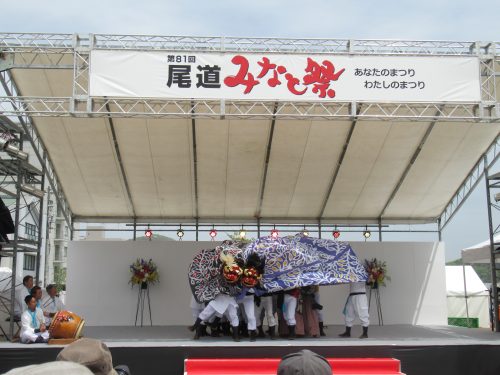
Upon arrival at Onomichi Station, the first thing I did was exit the building and cross the street to the first thing that caught my eye—a stage with a sizable crowd engrossed in the various performances. The shows were of various genres, from child acrobats standing on the shoulders of their elders while holding foldable fans between their toes to singing and dancing to traditional Japanese music. I snapped this photo of a vivid lion dance before I tired of the surrounding crowd and found a vantage point from which to look (I love my digital camera’s zoom) and listen from afar. The audio from the speakers reached all the way to the second-floor balcony of the Green Hill Hotel where I was watching the performers, and when I got my fill, I proceeded over the street via the skybridge to the next point of interest.
One-Stop Fun Shop
This carnival zone intended for kids (though grown-ups can definitely have a good time here too) consisted of a couple hands-on workshops, a photo gallery exhibiting locals with their animals, a cotton candy stand, and some carnival games like target shooting and fishing for water balloon yo-yos from a miniature pond.
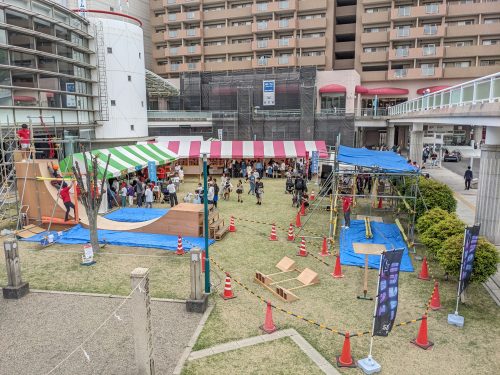
However, the highlight of this area was without a doubt Ninjaa Land, a makeshift obstacle course that attracted the eyes of all passersby. Every attraction had a line but the line for Ninjaa Land was especially long with parents waiting in line with their kids, and once in a while, an adult tried his or her hand at the obstacle course too! Anyone who knows me knows that I’m a sucker for any physical challenge at events like this one, but it went without saying that I would get in line to show these kids how it’s done. After studying the course from above for a spell, I descended to ground level, paid the admission fee, put on the required helmet and knee pads while waiting in line, and when my turn came, went into ninja mode.
Moment of Joy: As Swift as Wind
As expected, I conquered the obstacle course without breaking a sweat, but what truly surprised me was my record time of 27 seconds, whereas the average finishing time floated around one minute.
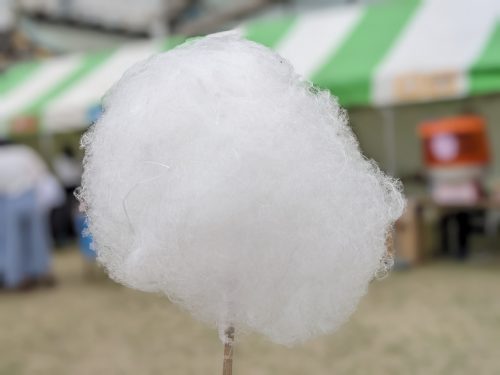
The prize for a job well done was a voucher valid for one go at a carnival stand: one could choose target shooting, water balloon yo-yo fishing, or a free helping of cotton candy. I figured I deserved the sweet treat for the calories burned just then and blissfully devoured my cotton candy on site. It’s not every day that I get the opportunity to test my sense of balance and run up a wooden halfpipe, so I’m grateful to Ninjaa Land for allowing me to unleash my inner child again, if only for a fleeting 27 seconds.
Festive Streets, Special Eats
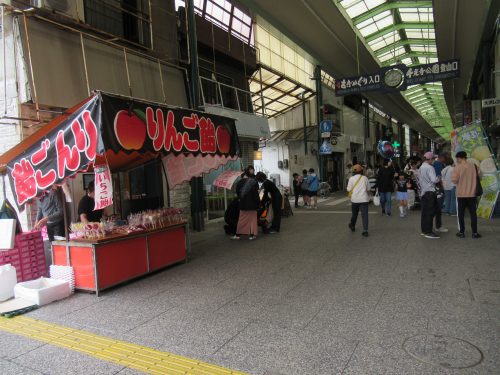
Next came the one aspect of festivals pretty much every visitor can partake in: eating while walking and watching costumed folks dance in the street. I started my tour on Onomichi Hondori, which had endless food stalls on either side, serving up classic festival grub like candied apples, sausages on a stick, chicken kara-age, you get the picture. It wasn’t just the same old stuff though, as the regular shops on Onomichi Hondori, not to be outdone by temporary vendors, set up tables right outside their storefronts to hawk their own versions of carnival cuisine. Case in point, “Keima,” a kamaboko (molded fish cake) store, had their staff outside the store selling exotic items including but not limited by okonomiyaki tempura and something called a “Keima Dog,” which was just a kamaboko on a stick batter-fried to resemble a corn dog.
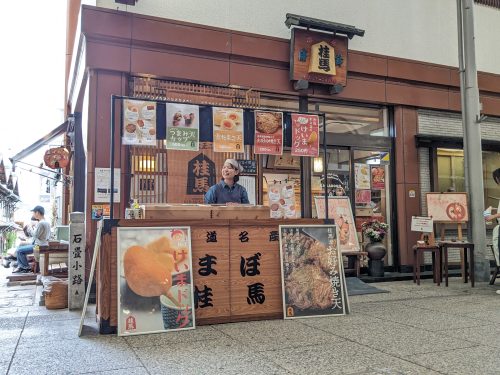
After reaching “Keima,” which was on my right-hand side, I hung a right and made my way towards Kaigan-dori, the seaside street running parallel to Onomichi Hondori where the dance parade was taking place. The parade was divided into sections based on the different organizations—many of which were local dance schools—participating, each with its own vibrant uniform. Each group thought of a cool, clever name for its squad; the one name that stuck out the most was “Dance Dance Oysters 21,” which made me chuckle as it was quite possibly the most Hiroshimarian name for a dance troupe one could conjure, to the point where it might elicit a cringe from some. The name also made my tummy grumble as I hadn’t had any real food that day besides the cotton candy I won from the obstacle course. I decided to watch the parade for a little bit and get what footage I could in that brief moment, then make tracks back to Onomichi Hondori to scour up some good eats.
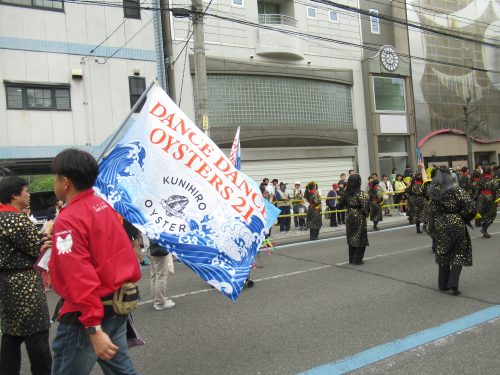
Photographing these dancers was the easy part, especially when they were standing still, but capturing a decent video of the parade in motion was a whole other story. Naturally, since the dancers were progressing down the street while busting a move, I had to follow them with my camera, but that was easier said than done as I had to weave through the crowd of onlookers and constantly adjust the altitude of my camera to see over people’s heads.
Bites Between Breaks
I pondered long about what to have for my impromptu lunch and wandered to what seemed like the end of the hall of stalls before deciding on Nagae, a fixed establishment specializing in petite pork buns. The storefront wasn’t much to look at, and the shopkeeper wasn’t all too attentive either since he wasn’t even at the window. Several of us waited patiently outside the store window for him to show up, and when he didn’t, another customer opened the door and shouted to him inside the building. It was only then that he approached the window to take our orders, as well as inform us that despite the litany of flavors listed on the window, only the salt and soy sauce flavors were available that day. I bought myself three and took them to a park I passed earlier where I could fuel up while seated and enveloped by children playing vicariously.
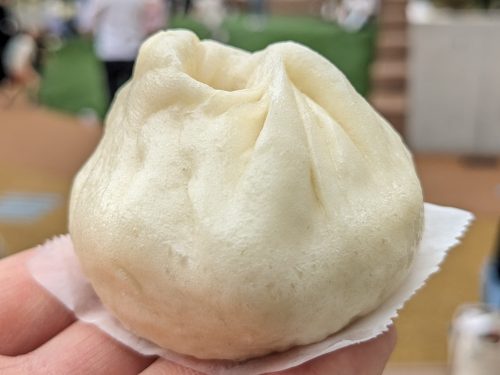
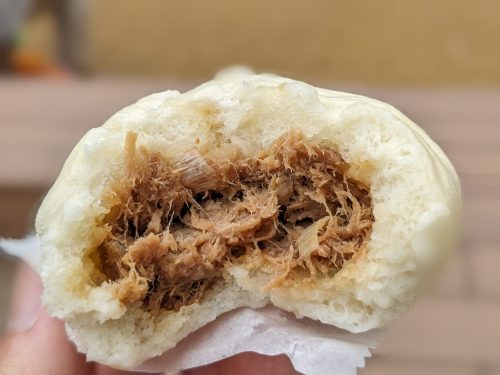
These buns were so tiny, I could safely hold all three in the palm of my hand if I were so inclined. Biting into them revealed a flossy, chewy pork center that made them look all the more tantalizing. I probably spent more time photographing these buns than I did eating them, but that snack ended in a flash, and it was time for me to find another. Before buying my other snacks, though, I paid a visit to an old bank building that was refurbished into a communal space where exhibitions are often held. On this day, there was an exhibit featuring the works of Hayahiko Yonaga, which included his painting and drawings, as well as pictures that looked like they could serve as promotional posters. Food and drink aren’t allowed inside the building, so I made sure to get this place out of the way before tracking down more bites.
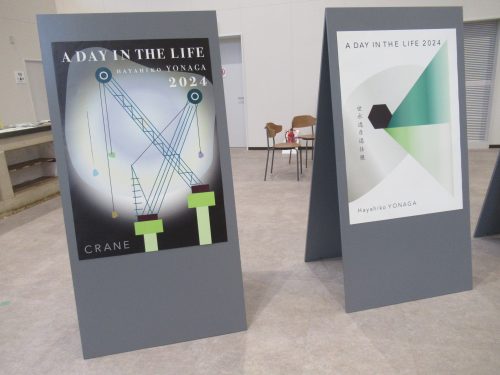
My remaining snacks were cheap and humble, but staples of every festival. I got myself a regular-sized sausage on a stick with ketchup, and a cool cucumber on a stick drenched with a spicy dressing, both of which were easy to eat on the go. I ate both standing while watching street performers on Onomichi Hondori do their thing, and before I knew it, the festival was approaching its end and the food vendors were packing up for the day.
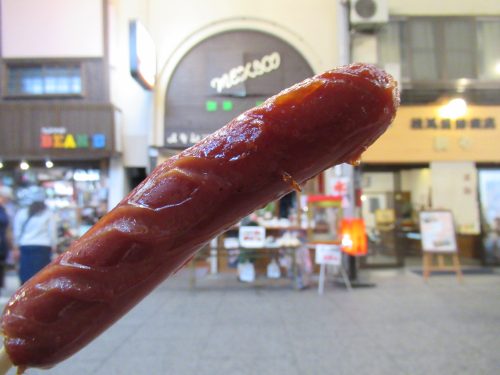
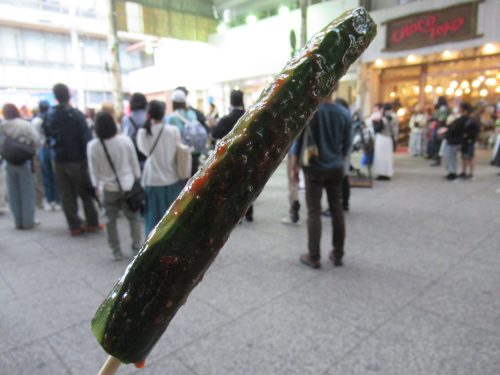
Energetic Evening
It was starting to rain at this time, and I wanted to go home, but I wanted a bowl of Onomichi ramen before hitting the road, so I stopped by Eijun, a trusty ramen joint that recently changed locations. After finding the restaurant in its new building, I stepped inside for a bowl and realized I was the only customer. Then again, it was only 5:45 pm and the restaurant had just opened for dinner.
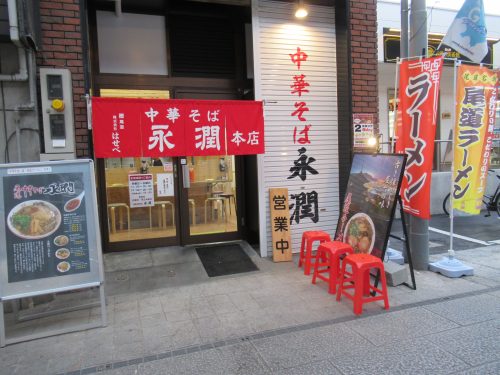
I put my money into the ticket vending machine and ordered a regular bowl of Onomichi ramen with a side of fried rice. What I like about this joint is that diners sit at isolated booths with privacy curtains so that not even the restaurant staff will bother them when they eat. The solitude allows us to give our undivided attention to the flavors of the foods we are ingesting, and in my case, the quiet allowed me to calmly review my photos and videos taken that day and reflect on everything I witnessed and did during the festival.
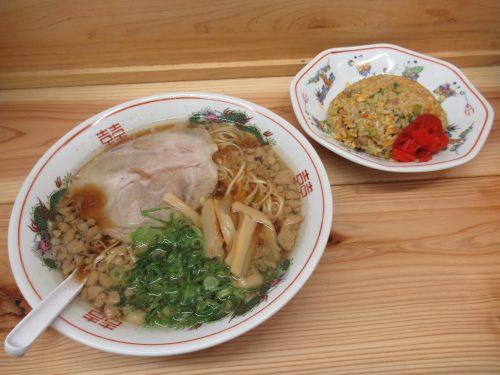
I had just finished my meal when I heard the sounds of a horde of people approaching the street where Eijun was, and suddenly it hit me. The dancing and food stalls may have ended for the day, but the main event of the night was transporting the portable shrine from one end of town to the other. I gathered my belongings and left the restaurant immediately to catch a glimpse of what was going on, and the moment I opened the door, the procession literally arrived on the doorstep.
To say it was a sight to behold would be an understatement, and everyone who saw and heard these folks stopped in their tracks to follow the commotion and take photos of the spectacle. The chanting and drumming put all of us in a festive trance until the music finally ceased and the people carrying the palanquin stopped to put it on the ground. My guess is that they were waiting for the right time to continue the procession to the nearby shrine, but as it was getting dark, I didn’t stick around to find out.
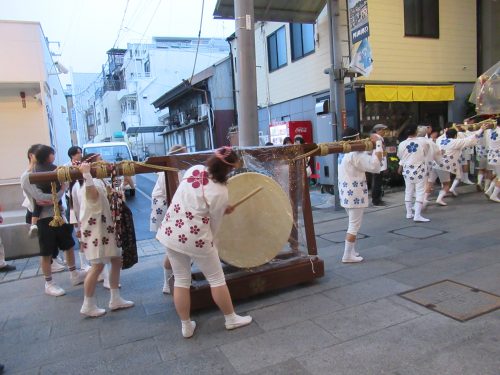
Festivals that take place at night usually feature illuminations, and the Onomichi Port Festival had its own illumination in the yacht harbor. It wasn’t anything too fancy; some of the yachts moored in the harbor—as well as the ramp leading to them—were modestly decked with multicolored electric lights, but it was still a cute little photo opportunity. I was thankful that the rain had stopped by sundown, and I could leisurely make my way back to where I began as the sun dipped below the horizon. For additional lights, the usual view of Mukaishima Harbor lit up at night provides an appropriate final spectacle to conclude the festival.
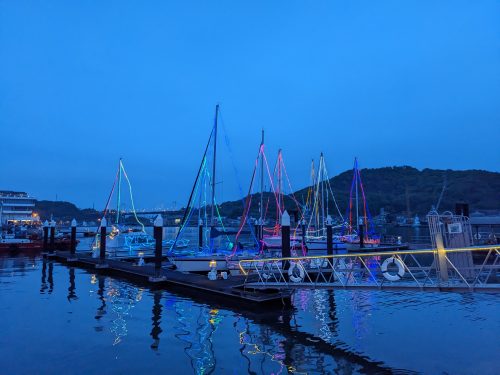
Was this all one could see at the Onomichi Port Festival? Hardly, but unless one is a performer, I don’t believe it’s necessary for a visitor to be so busy and hit up every single event happening across multiple venues. Onomichi usually doesn’t get this rowdy, so seeing crowds of this size and hearing the streets get this lively was enough of a treat for me. Any local or regular visitor to Hiroshima Prefecture ought to make time to check out Onomichi during its annual Port Festival despite its timing outside of Golden Week, as the seaside celebrations can put anyone in the mood for a portside party. This holds true for any port town in Japan regardless of size, so if you have plans to swing by any seaside locale during the warmer months, do your research on port festivals beforehand and you might find yourself partying in the portside streets one day!
Written by the Joy in Hiroshima Team
